‘Everything human-made is of interest to me’: Hildigunnur Birgisdóttir in Venice
Artist Hildigunnur Birgisdóttir explores consumerism at the Icelandic Pavilion at the Venice Biennale 2024

Icelandic artist Hildigunnur Birgisdóttir is drawn to detail. In her hands, a concern with the bigger picture is translated into a fascination with minutiae: the small, throwaway accessories of consumerism, for example, from signs to price tags and packing materials.
It is a fascination she has explored for the Icelandic Pavilion at the Venice Biennale 2024, in an exhibition titled ‘That’s a Very Large Number - A Commerzbau’, which also draws inspiration from ‘Merzbau’, German Dada artist Kurt Schwitters’ method of creating immersive collages from found materials. In works crafted from plastic toys and objects, and an installation made from a recycled floor panel from the Venice Architecture Biennale 2023, Birgisdóttir uncovers capitalism in all its forms. Here, she reveals the process behind her work.
Hildigunnur Birgisdottir at the Venice Biennale 2024
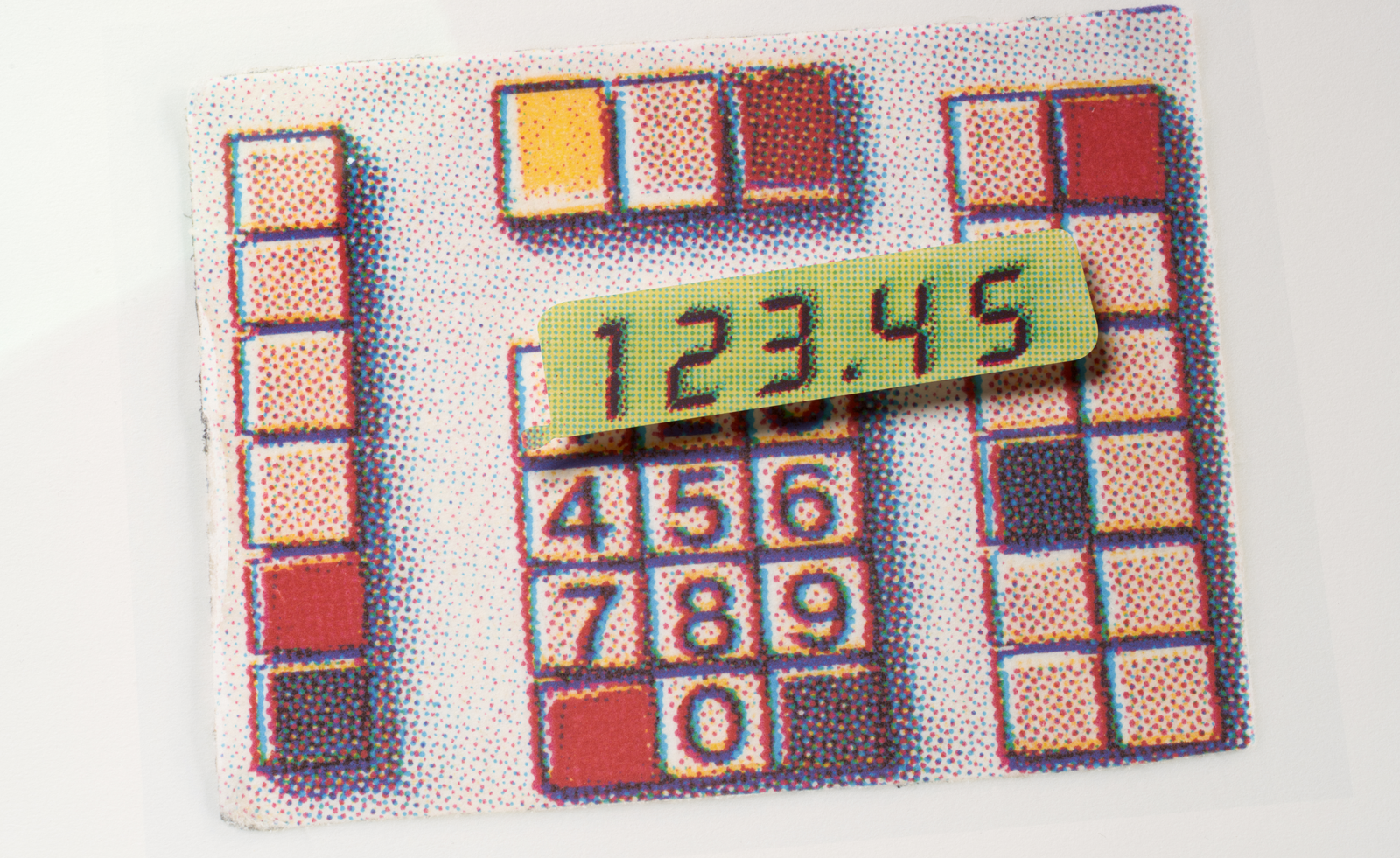
Hildigunnur Birgisdottir, Very Large Number, 2024
Wallpaper*: Your work is an interesting juxtaposition of innocent, childlike symbols and technical process. What has drawn you to such symbols as a means to express your thoughts on commercialisation?
Hildigunnur Birgisdottir: Everything human-made is of interest to me; I am trying to make sense of the world we humans have built. Sometimes, my only conclusion is to see the beauty in it. I enjoy when my findings bring me joy and humour, which you can also find in my work. So, I deep dive into these technical processes via factories and manufacturers that already exist, to go through the body of commercialism, while the symbols and logos are something more external – they represent the exterior of the system. We are all brought up as avid readers of these symbols, and that fascinates me. That we have developed a cognitive brain for millennia resulting in excellent logo reading abilities! Quelle surprise!
With the mass-produced children’s toys I represent in the exhibition, I found them to be telling of our human existence – it is a mini world we make for our children to learn to exist in this world. It’s simplified so that they can better understand and practice thriving in it. We have cash registers, dentist offices, car mechanics and all sorts of products, even nature has been reproduced in plastic for children to play with. This I find fascinating and I believe we can learn a lot about ourselves and the global system of commerce through the things we produce for children and also how we produce them.
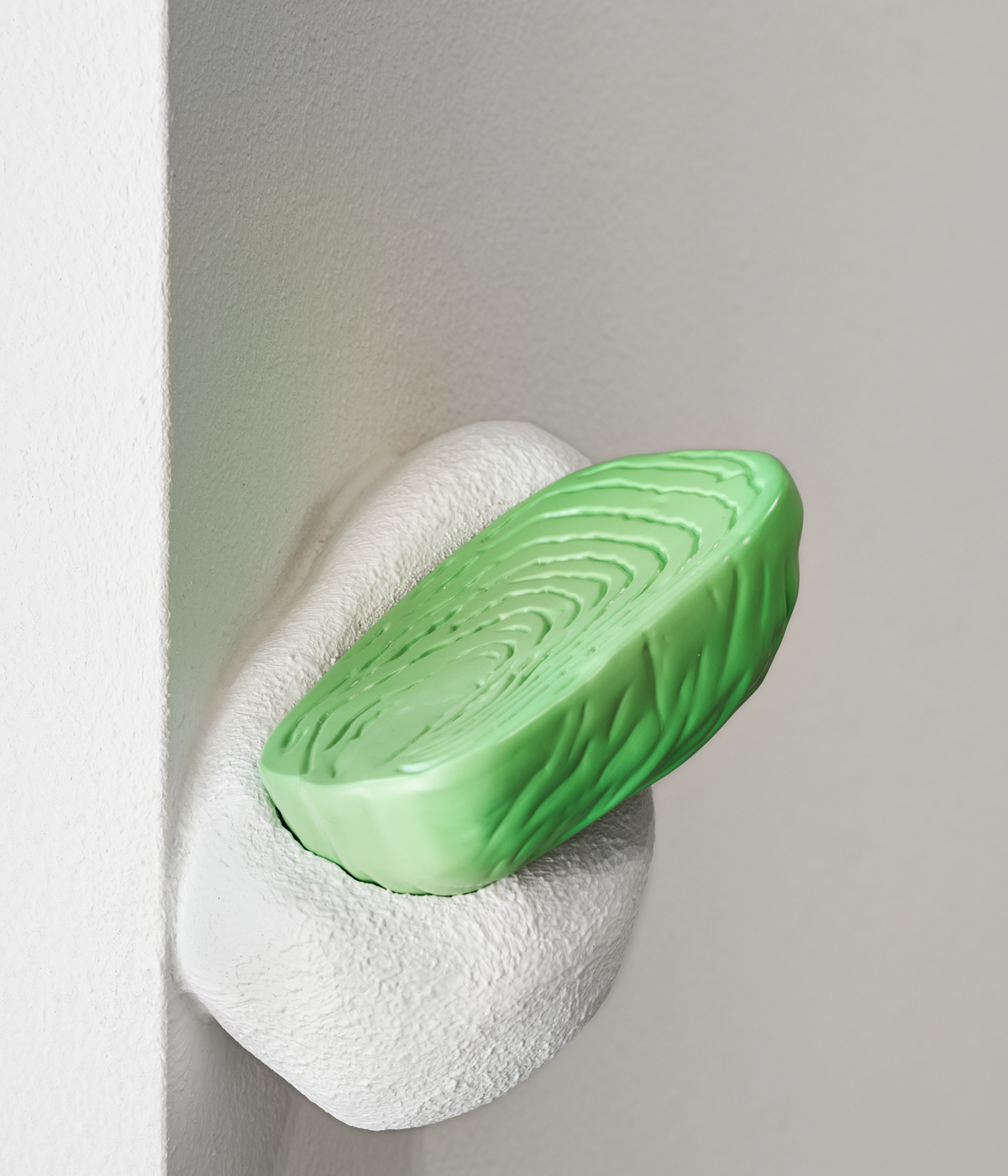
Hildigunnur Birgisdóttir, 6:1 (green), polyamide plastic, paint
W*: How have you translated a history of rethinking found objects, demonstrated by those including Kurt Schwitters, into the materials you have chosen to work with here?
HB: The force of repurposing is strong with me. Everything human-made is my preferred subject and interests me. I often find truth and beauty in the things that we produce millions of copies of – objects that do not exist for themselves, but rather serve as the presenters or holders for the items that are actually for sale. These objects are then tossed away after purchase, such as hangers for clothing in stores, plastic hooks to secure a product in its wrapping, etc.
I am, of course, building on the premise that nothing is excluded from being material for an artwork. This was a fundamental game changer. The fact that one could take a mass-produced item (a news clipping) and recontextualise it was a brilliant idea and perhaps made artists better equipped to reflect on the fast-changing world around them.
Wallpaper* Newsletter
Receive our daily digest of inspiration, escapism and design stories from around the world direct to your inbox.
The subtitle of my exhibition, ‘A Commerzbau’, was inspired by my memory of being taught in school that this nonsensical word ‘Merz’, which Schwitters used for all his collages and then later ‘Merzbau’ for his installations, actually comprises the latter part of the word ‘Kommerz’ in German. Kurt had simply cut up that word and used ‘Merz’ in one of his works and decided that this would be the title of this type of art. After I had been working on my exhibition, it dawned on me that I had made an installation of found objects, a ‘Merzbau’ of sorts, made from the debris of commerce. Thus, I could say I reintroduce the ‘com’ to the ‘merz’ resulting in a ‘commerzbau’.
W*: Holograms, playing with our perception, can offer multiple interpretations. Why were you keen to work with them here?
HB: The holograms came from a wrapping I acquired that fascinated me. The wrapping was colourful and packed with information. (I believe it was from a light bulb: 40W / eco-friendly / 100 per cent guarantee/ 78,000 hours…) Each bit of information seemed to be competing for attention. On top, there was a holographic pattern that made the whole thing decorative. When I looked closely at the hologram, I saw that it was the logo of the company repeated like a pattern. This was the most decorated piece of paper I had seen for ages, and yet it was purely information, without any real decorative elements. Then I started looking into the hologram business and the fact that it is used in the marketing world to show that something is authentic, to increase value or to make something official and harder to copy (money and passports) fascinated me even more!
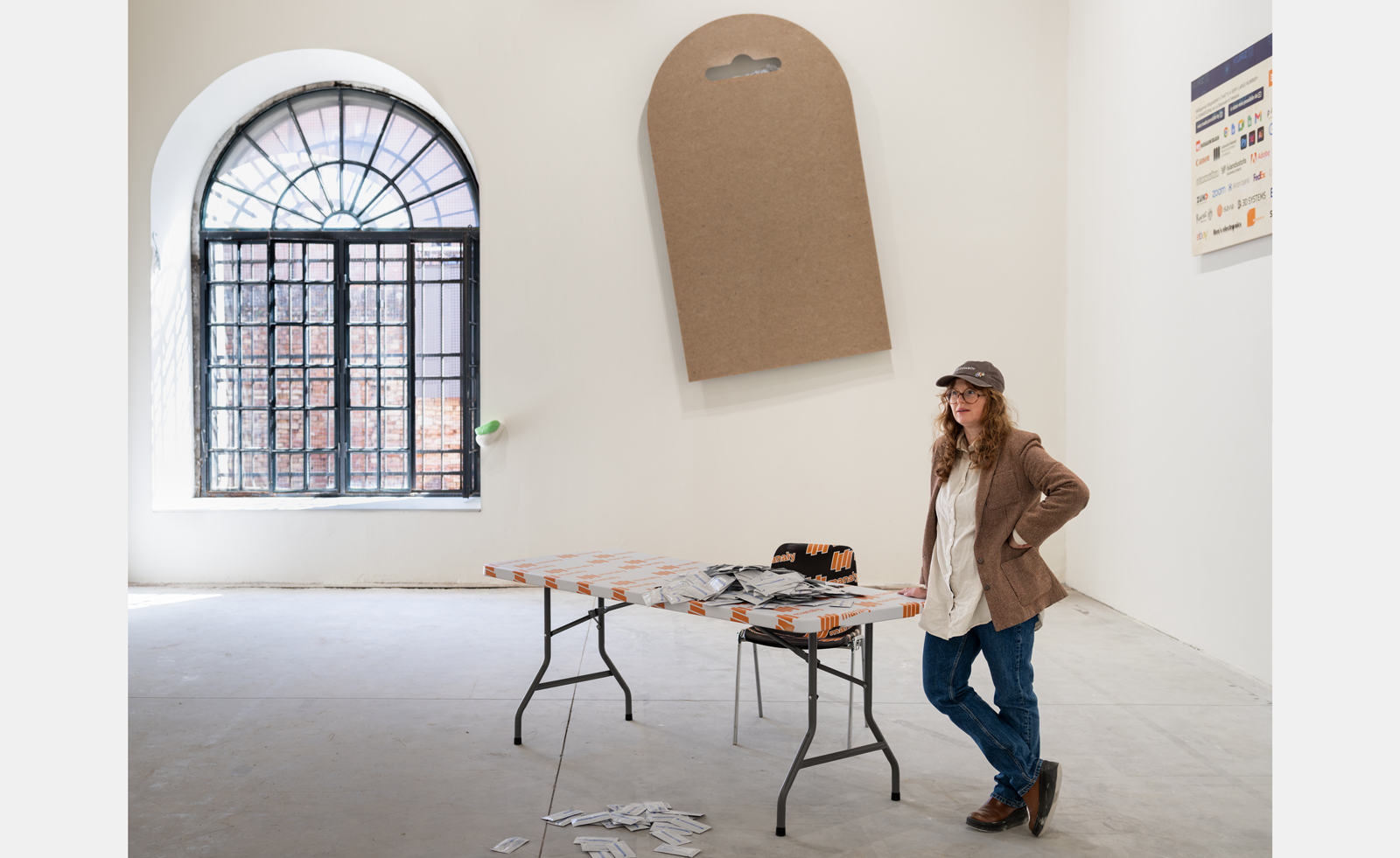
Portrait of Hildigunnur Birgisdóttir, at ‘That’s A Very Large Number – A Commerzbau’, Iceland Pavilion, Venice Biennale 2024
W*: You mention your experience, while growing up, of capitalism appearing so suddenly. How else had your heritage really defined your work for this piece?
HB: The way one’s heritage really makes a person and informs their belief-systems must be fundamental in my way of thinking.
I guess the fact that we [Iceland] are a small nation with a somewhat blown-up ego makes it seem reasonable to a person that they actually might have something to say, if that makes sense (we all might be suffering from an Island mentality). The ‘art scene’, as we know it elsewhere in the world, is also fairly young in Iceland, which maybe frees me from some of the burdens of art history. But since we are the nation of ‘The Sagas’, the written word is above all. I think that might have resulted in the strong roots of conceptual art in Iceland; you can definitely see that influence in my work.
‘That’s a Very Large Number - A Commerzbau’, by Hildigunnur Birgisdóttir at the 60th International Art Exhibition – La Biennale di Venezia 2024, until 24 November 2024
Hannah Silver is the Art, Culture, Watches & Jewellery Editor of Wallpaper*. Since joining in 2019, she has overseen offbeat design trends and in-depth profiles, and written extensively across the worlds of culture and luxury. She enjoys meeting artists and designers, viewing exhibitions and conducting interviews on her frequent travels.
-
 Extreme Cashmere reimagines retail with its new Amsterdam store: ‘You want to take your shoes off and stay’
Extreme Cashmere reimagines retail with its new Amsterdam store: ‘You want to take your shoes off and stay’Wallpaper* takes a tour of Extreme Cashmere’s new Amsterdam store, a space which reflects the label’s famed hospitality and unconventional approach to knitwear
By Jack Moss
-
 Titanium watches are strong, light and enduring: here are some of the best
Titanium watches are strong, light and enduring: here are some of the bestBrands including Bremont, Christopher Ward and Grand Seiko are exploring the possibilities of titanium watches
By Chris Hall
-
 Warp Records announces its first event in over a decade at the Barbican
Warp Records announces its first event in over a decade at the Barbican‘A Warp Happening,' landing 14 June, is guaranteed to be an epic day out
By Tianna Williams
-
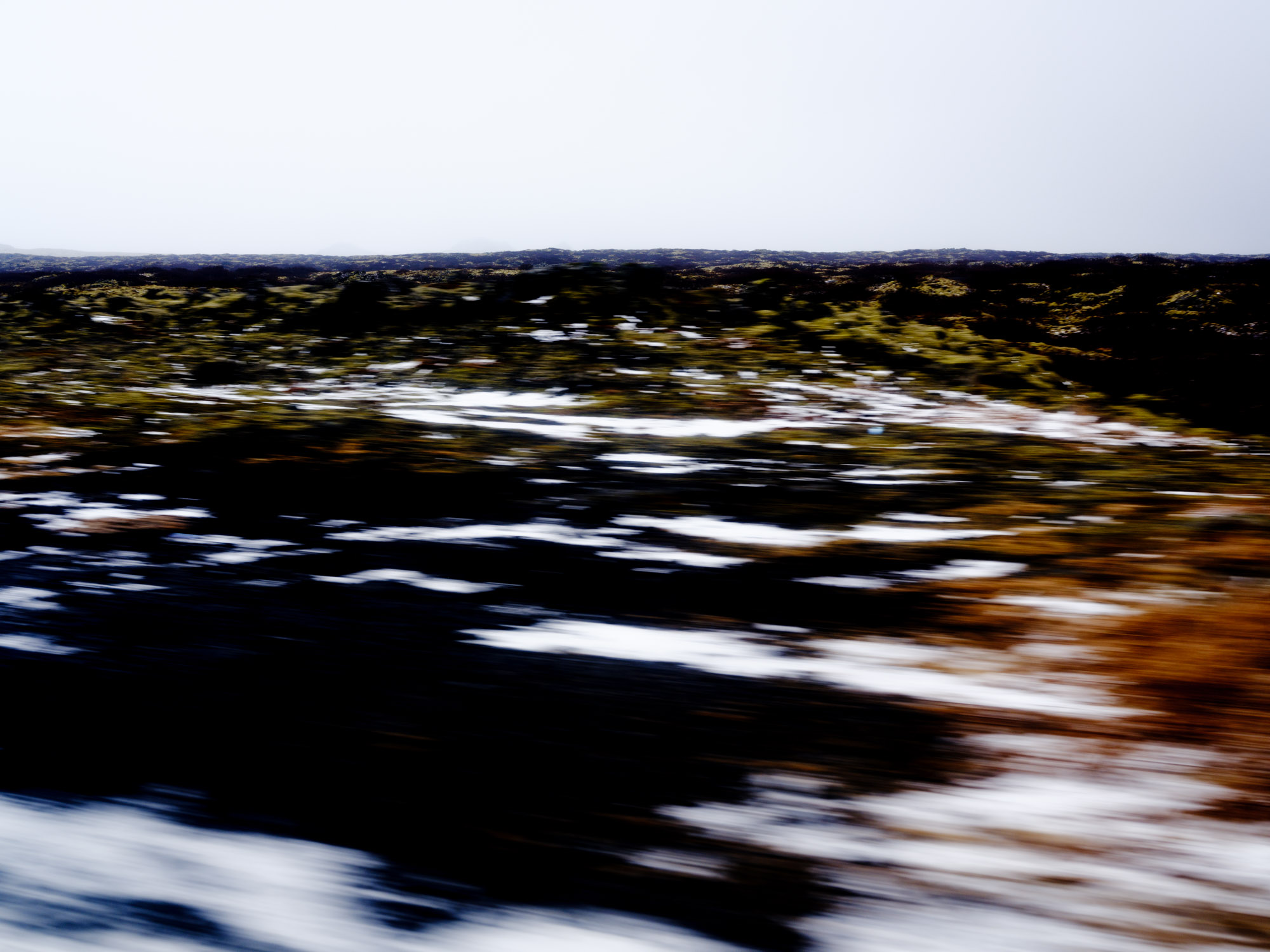 Feminism, freedom and Björk: inside Reykjavik's interdisciplinary modern art scene
Feminism, freedom and Björk: inside Reykjavik's interdisciplinary modern art sceneCollaboration and community lie at the heart of a new generation of Icelandic creators
By Lisa Wright
-
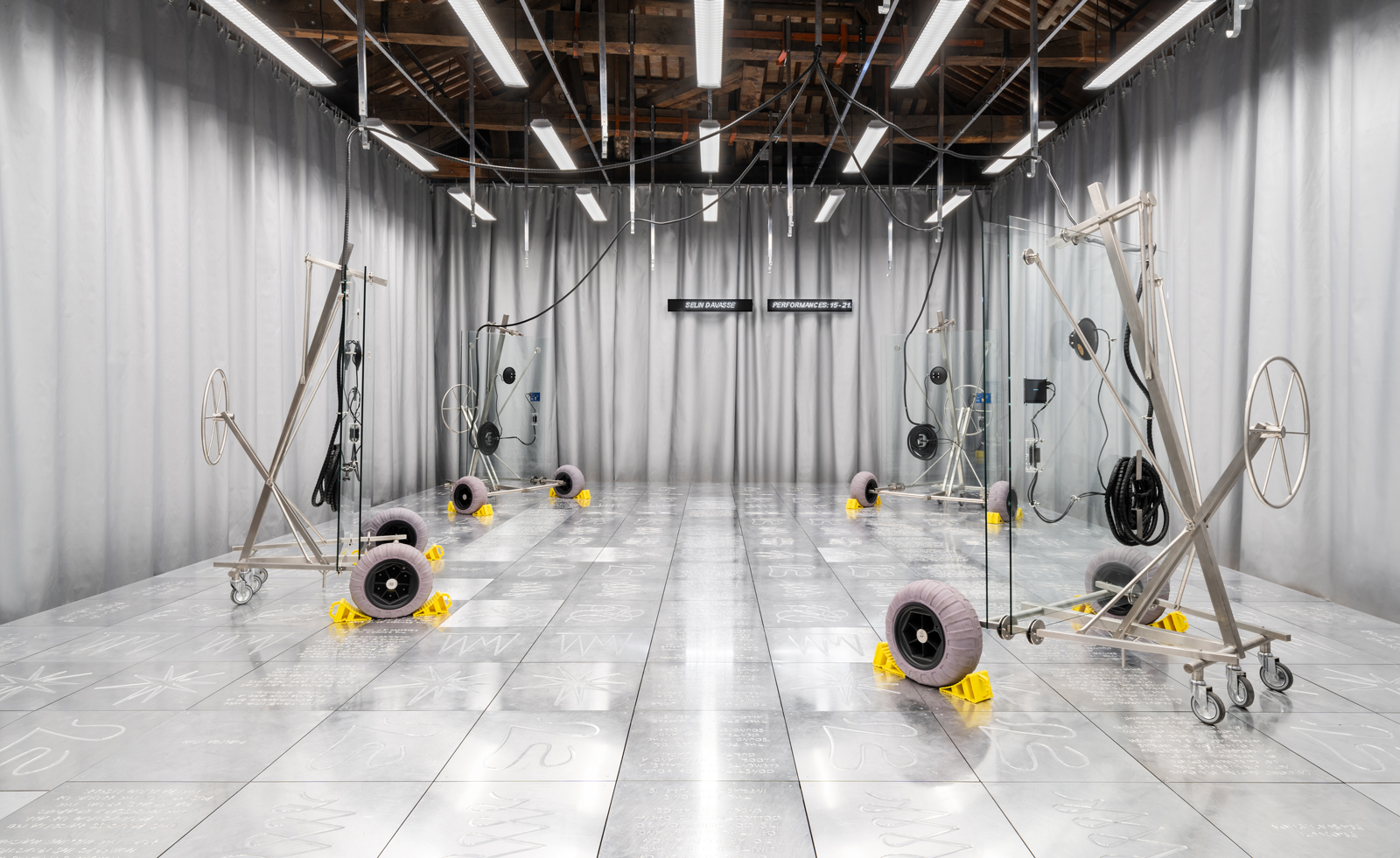 Don't miss Luxembourg's retro-futuristic lab pavilion in Venice
Don't miss Luxembourg's retro-futuristic lab pavilion in VeniceAs the Venice Biennale enters its last few weeks, catch 'A Comparative Dialogue Act' at the Luxembourg Pavilion
By Amah-Rose Abrams
-
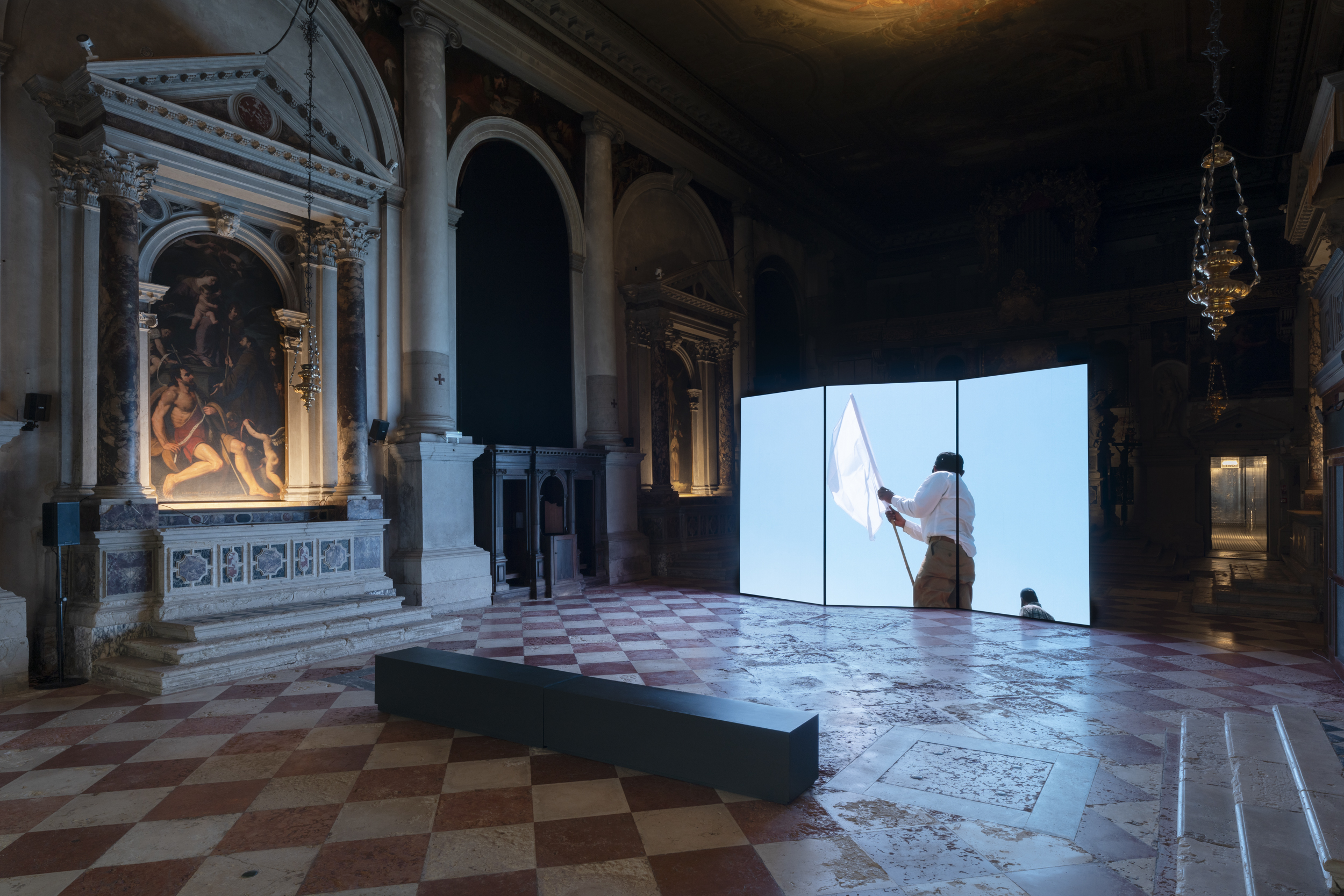 Enter the immersive world of film noir at a disused hospital in Venice
Enter the immersive world of film noir at a disused hospital in VeniceFondazione In Between Art Film returns to Venice with ‘Nebula’, by curators Alessandro Rabottini and Leonardo Bigazzi
By Amah-Rose Abrams
-
 Alternate worlds and end of days: Pierre Huyghe in Venice
Alternate worlds and end of days: Pierre Huyghe in VenicePierre Huyghe delves into dystopia with 'Liminal', at Palazzo Grassi’s Punta della Dogana in Venice
By Amah-Rose Abrams
-
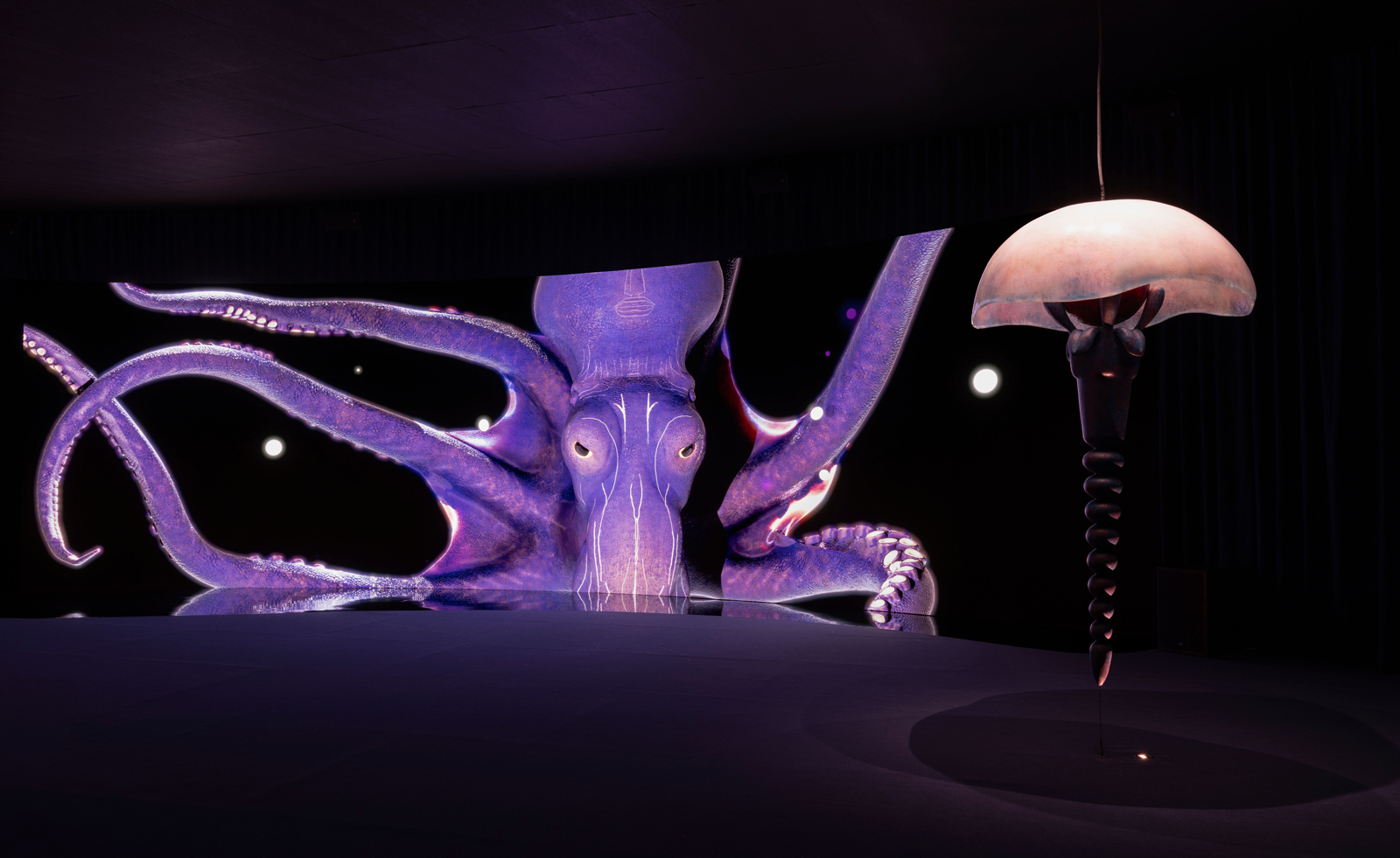 Josèfa Ntjam on her surreal utopias in Venice
Josèfa Ntjam on her surreal utopias in VeniceArtist Josèfa Ntjam and LAS Art Foundation bring other worlds to life with ‘swell of spæc(i)es’ at Accademia di Belle Arti di Venezia during the Venice Biennale 2024
By Hannah Silver
-
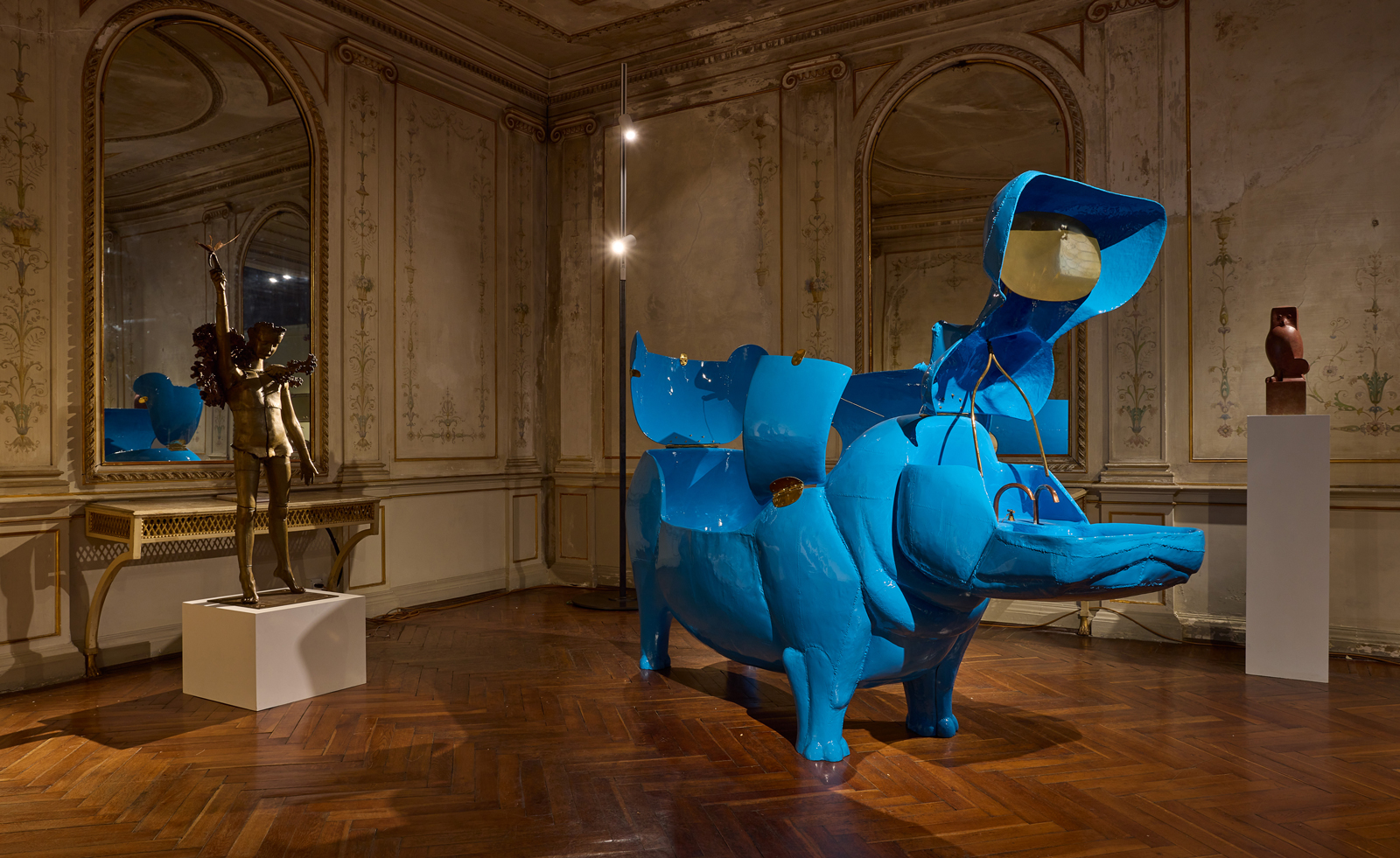 Les Lalanne’s surreal world takes over Venice
Les Lalanne’s surreal world takes over Venice‘Planète Lalanne’, presented by Ben Brown Fine Arts, takes over Palazzo Rota Ivancich, with a cast of blue hippos, woolly sheep and giant grasshoppers
By Hannah Silver
-
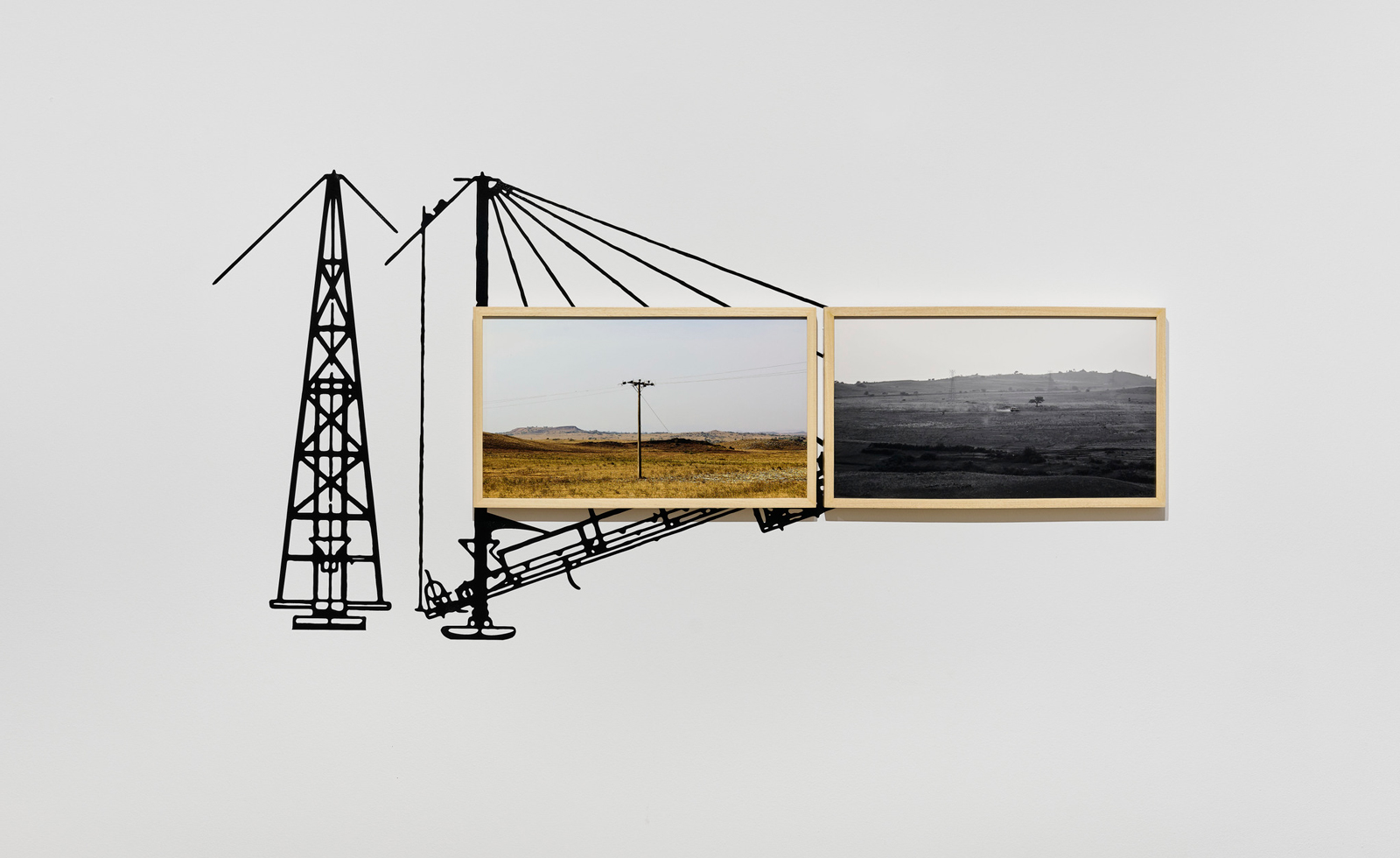 Aindrea Emelife on bringing the Nigerian Pavilion to life at the Venice Biennale 2024
Aindrea Emelife on bringing the Nigerian Pavilion to life at the Venice Biennale 2024Curator Aindrea Emelife has spearheaded a new wave of contemporary artists at the Venice Biennale’s second-ever Nigerian Pavilion. Here, she talks about what the world needs to learn about African art
By Ugonna-Ora Owoh
-
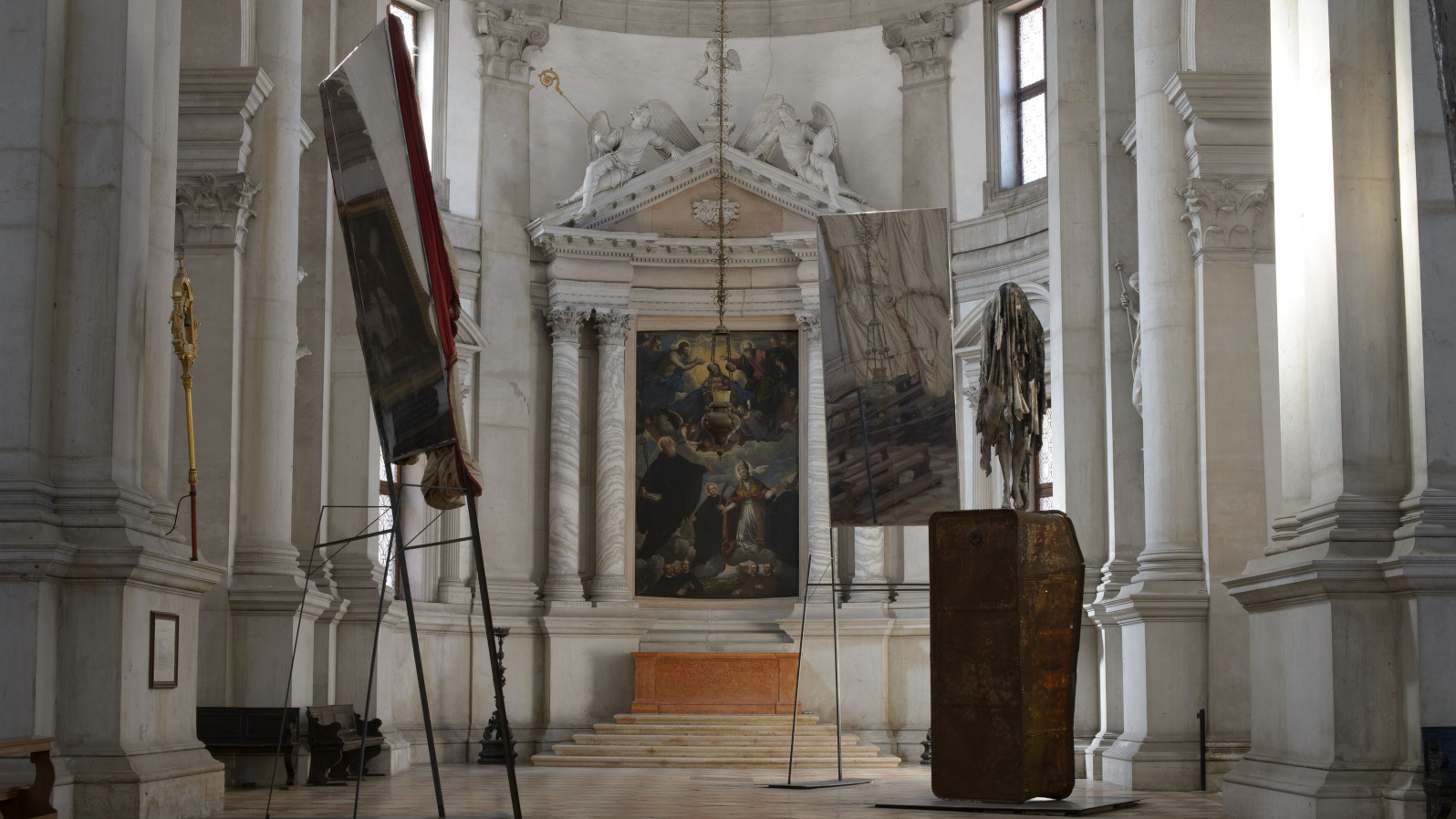 Berlinde De Bruyckere’s angels without faces touch down in Venice church
Berlinde De Bruyckere’s angels without faces touch down in Venice churchBelgian artist Berlinde De Bruyckere’s recent archangel sculptures occupy the 16th-century white marble Abbazia di San Giorgio Maggiore for the Venice Biennale 2024
By Osman Can Yerebakan